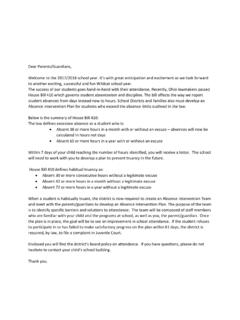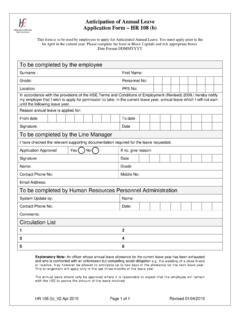Transcription of ANTICIPATION GUIDE BUD, NOT BUDDY - Novelinks
1 ANTICIPATION GUIDE BUD, NOT BUDDY Directions: Read each statement and decide what you think. In the space provided, mark D for Disagree and A for Agree. This is an opportunity for you to make some educated guesses. You will not be graded on how right your answers are, but be prepared to support your responses. 1. _____ A young boy s search for belonging is imperative in his growing-up process. 2. _____ Foster homes are always wonderful environments for children. 3. _____ People during the Great Depression were all homeless and jobless. 4. _____ During the Great Depression, it was every man for himself. People were always distrusting and unwilling to lend a helping hand.
2 5. _____ Jazz as a musical genre made its grand debut during the Great Depression. 6. _____ The main character in the story is a lonely orphan who does not know how to care for himself. 7. _____ Christopher Paul Curtis modeled his characters after people who actually experienced the Great Depression. 8. _____ Hooverville is a town in South Dakota. Describe the following terms either by drawing a small picture or defining them in a few words: 1. Hoover flags 2. Hoover blankets 3. Hooverville Cummings, BYU, 2002. ANTICIPATION GUIDE BUD, NOT BUDDY TEACHER S DIRECTIONS Purpose The ANTICIPATION GUIDE for Bud, Not BUDDY is intended to activate student schema in a non-threatening situation.
3 Explain that this is an activity where they can hypothesize, or make educated guesses, in response to the questions. This is not a right/wrong answer activity. This activity should draw upon facts that students may know about the Great Depression or just things they might think about life. This is a chance for students to take those facts and anticipate what this story will be about. In addition, students must defend their answers in discussion, which encourages the use of analytical skills as they complete this assignment. As a pre-reading activity, this enables students to interact with the text even before they open the book. Rationale Because this is an ANTICIPATION GUIDE , it should be administered before the students begin reading the novel.
4 You may show the class the cover of the novel or even pass it out before you administer this activity, but do not assign reading until this assignment is completed and discussed in class. Directions/Steps -Show the students the cover of Bud, Not BUDDY . -Have students voice some opinions of what they think the book will be about based on the cover (potentially use a DRTA strategy). -Hand out the ANTICIPATION GUIDE . -Read the directions aloud. -Emphasize the fact that this is not graded for correct/incorrect answers, but students will have to support the answers they choose. -Give students 10-15 minutes to think about and complete the ANTICIPATION guideon their own. -Have a class discussion, reviewing the answers and asking for support from the students who chose each side of the issue.
5 This could take the rest of the period, but gauge it on how involved the students are in the discussion. Cummings, BYU, 2002. ANTICIPATION GUIDE BUD, NOT BUDDY ANSWER SHEET Directions: Read each statement and decide what you think. In the space provided, mark D for Disagree and A for Agree. This is an opportunity for you to make some educated guesses. You will not be graded on how right your answers are, but be prepared to support your responses. 1. _T/F_ A young boy s search for belonging is imperative in his growing-up process. (This point can be argued, although I think that all young people go through a search for belonging to some extent). 2. __F_ Foster homes are always wonderful environments for children.
6 3. __F__ People during the Great Depression were all homeless and jobless. 4. __F__ During the Great Depression, it was every man for himself. People were always distrusting and unwilling to lend a helping hand. 5. __T__ Jazz as a musical genre made its grand debut during the Great Depression. 6. __F___ The main character in the story is a lonely orphan who does not know how to care for himself. 7. __T__ Christopher Paul Curtis modeled his characters after people who actually experienced the Great Depression. 8. __F___ Hooverville is a town in South Dakota. Describe the following terms either by drawing a small picture or defining them in a few words: 1.
7 Hoover flags People s empty pockets hanging out of their pants, signifying that they had no money. They blamed this on President Hoover and his domestic policies/lack of public assistance. 2. Hoover blankets The newspapers that the homeless would use to cover themselves, trying to protect in some way against the cold. 3. Hooverville Shantytowns where people would gather when they were evicted from their homes. Many times the homes in these little towns were made of cardboard and tin. Cummings, BYU, 2002.











